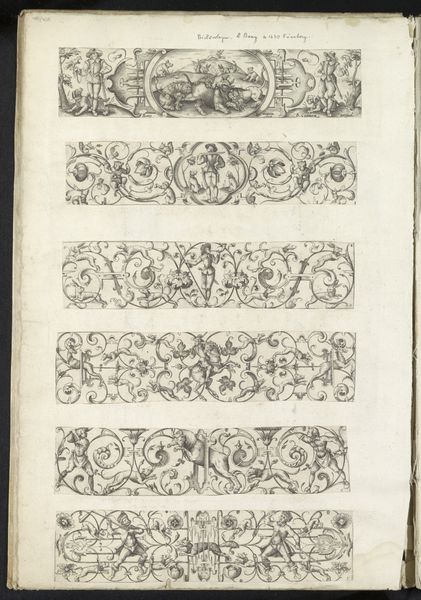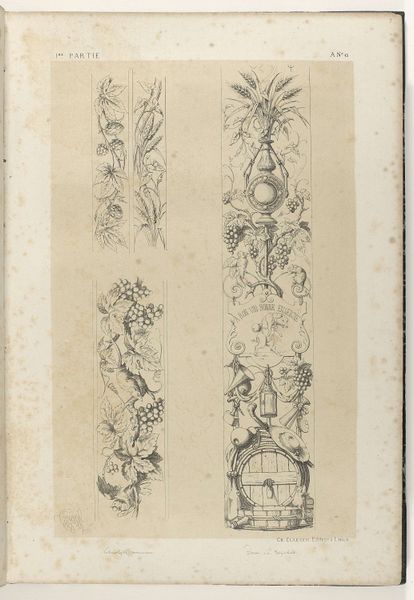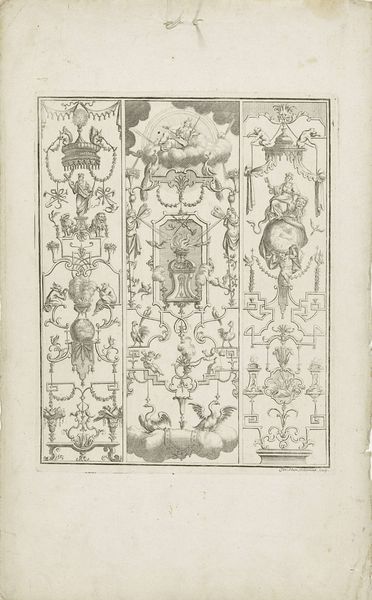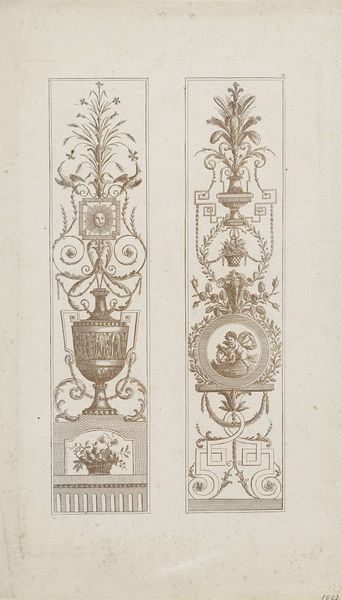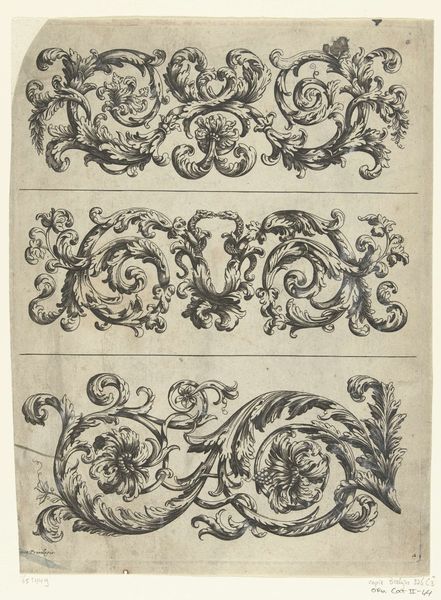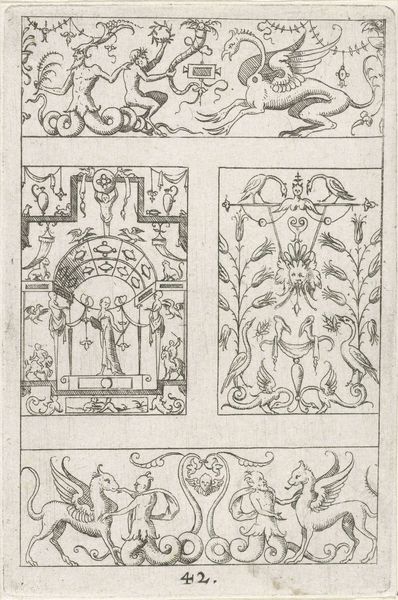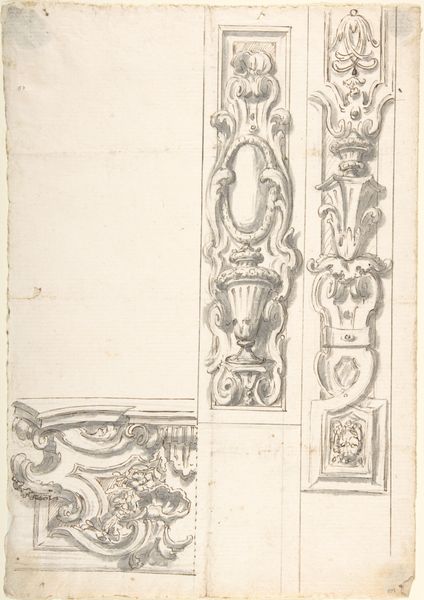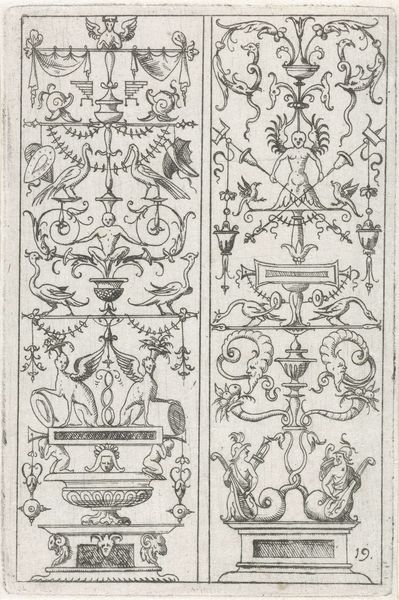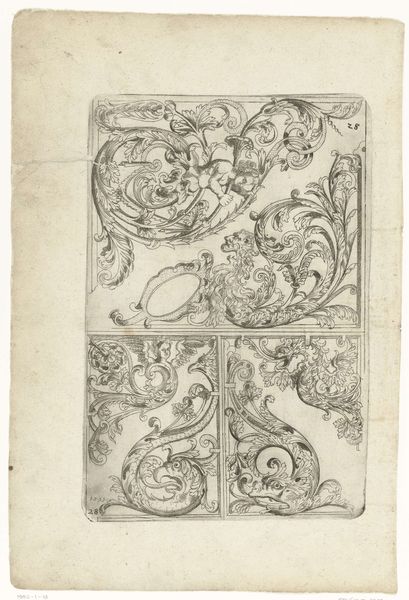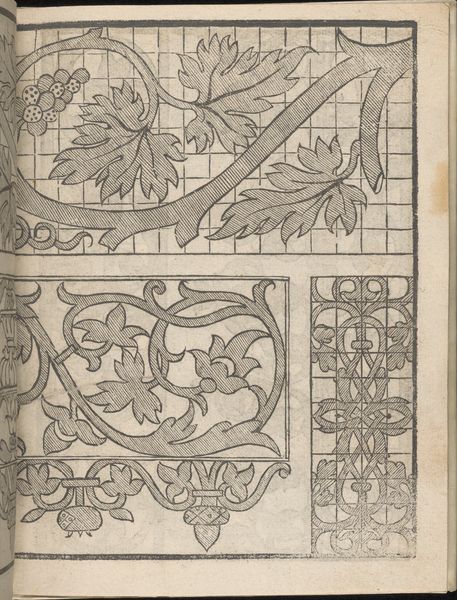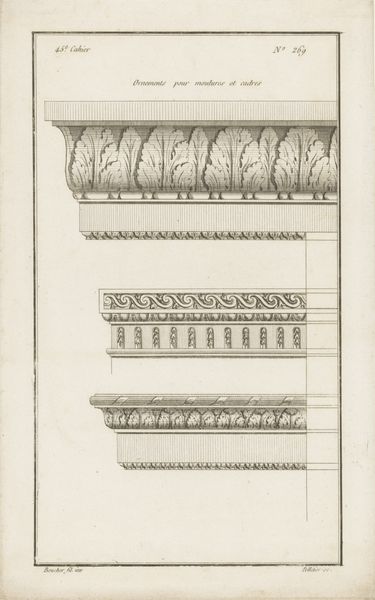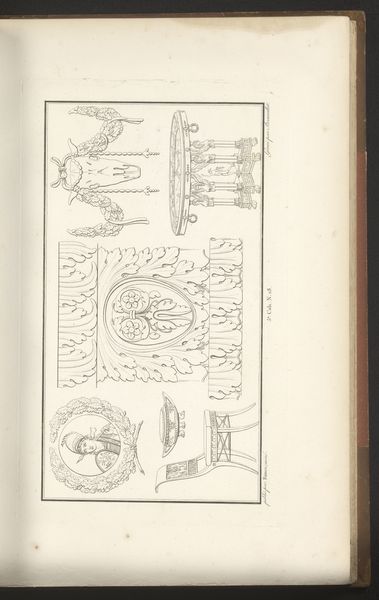
Classical Border Elements with Vines and Leaves 1776 - 1779
0:00
0:00
drawing, ornament, print, paper, pencil
#
drawing
#
neoclacissism
#
ornament
#
toned paper
#
light pencil work
#
pen drawing
# print
#
pen sketch
#
classical-realism
#
paper
#
form
#
personal sketchbook
#
ink drawing experimentation
#
geometric
#
pen-ink sketch
#
pencil
#
men
#
line
#
pen work
#
sketchbook drawing
#
academic-art
#
sketchbook art
Dimensions: sheet: 14 1/2 x 12 in. (36.9 x 30.5 cm)
Copyright: Public Domain
Curator: At first glance, there's a quiet formality here. The neatness of the drawings almost obscures the organic forms. Editor: Indeed. What we see here is "Classical Border Elements with Vines and Leaves," a drawing by Thomas Hardwick, dating back to 1776-1779. Curator: A fascinating window into Neoclassical sensibilities. I'm immediately drawn to how Hardwick captured classical motifs: the acanthus leaves, rosettes, egg-and-dart patterns. These weren't just decorations. They were signifiers. Editor: Exactly, it’s more than decorative; it’s a statement of power. Those repeating elements, perfectly spaced, resonate with themes of order, reason, and a deliberate harkening back to perceived cultural high points. Consider the socio-political climate of the late 18th century. Revolutions brewing, shifts in power—and here's Hardwick meticulously sketching idealized forms from antiquity. Curator: A yearning for a stable, idealized past in the face of uncertain times. And it’s worth noting that he didn’t choose overtly national or specific imagery but these shared classical elements. Editor: Because it served specific function for the class in charge at that time, the English elite would recognize their own cultural memory reinforced by such objects as architecture, which these sketches were meant to inform. This imagery naturalized those historical and social contexts as part of their inherent claim to power. Curator: That continuity is the heart of it, the use of those same borders on new buildings connects the owner to these values, like order, harmony, tradition, status. The language of ornamentation then spoke very directly. Editor: I appreciate the restraint in his linework, though. It lends an almost scientific quality to the designs, making them feel almost like specimens or blueprints rather than pure aesthetic fancy. But the context makes the blueprint dangerous, like instructions of keeping others down. Curator: An architectural manifesto rendered in graphite! I concede the socio-political power in play; still, seeing how meticulously these images are composed connects us to a visual heritage that remains compelling and still relevant. Editor: I appreciate that sentiment, seeing that lasting link. Looking back at this design on paper here and then seeing it in practice later creates a visual reminder of historical events that shaped both culture and society, in sometimes uncomfortable ways.
Comments
No comments
Be the first to comment and join the conversation on the ultimate creative platform.
